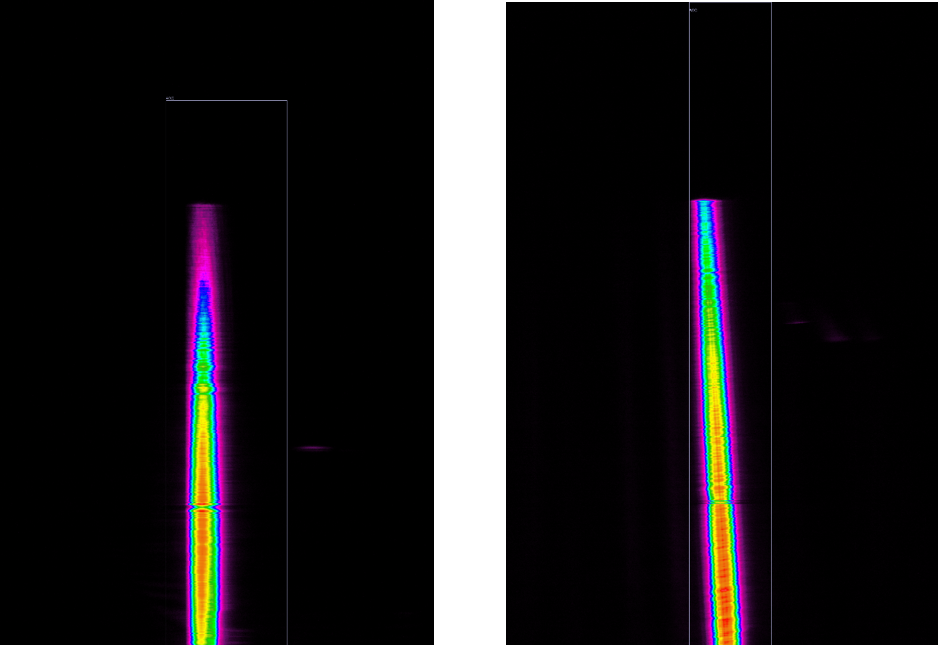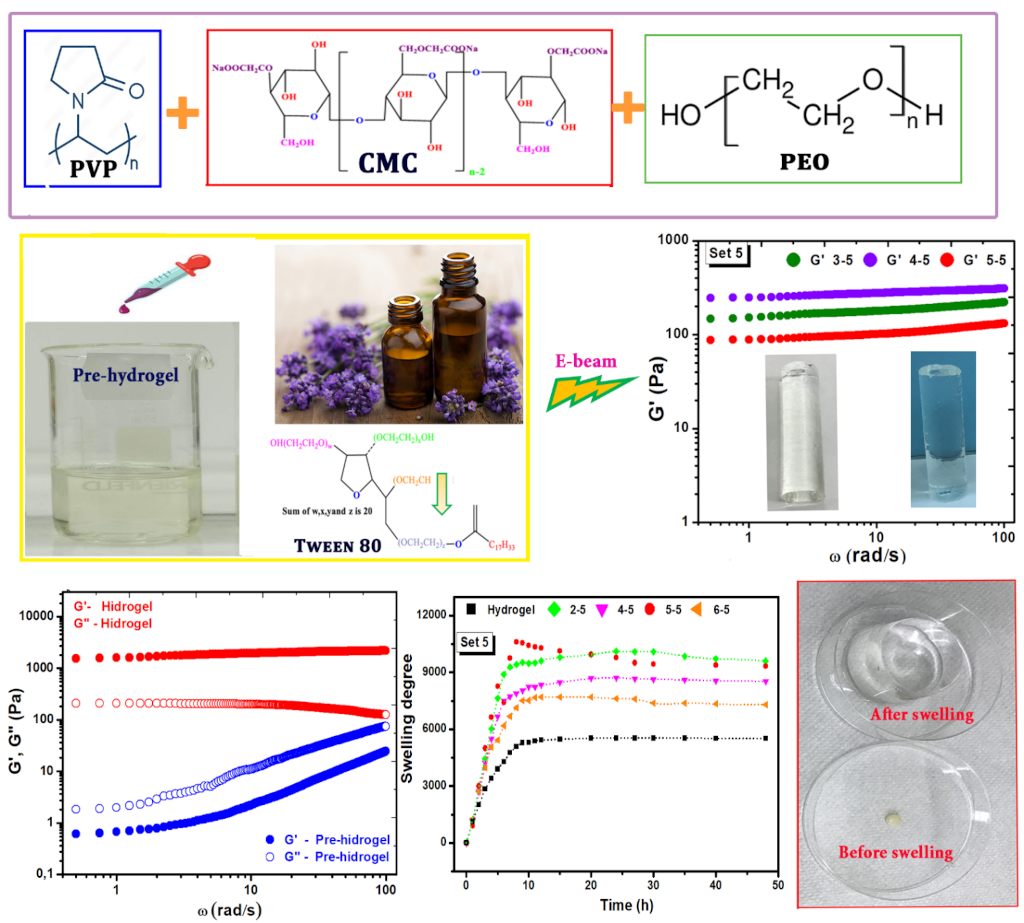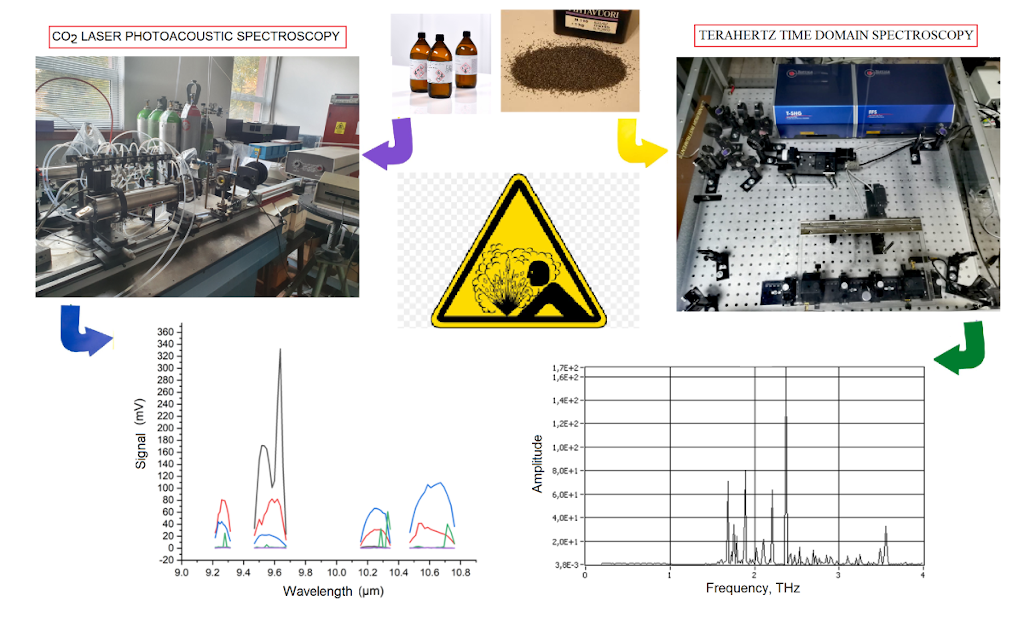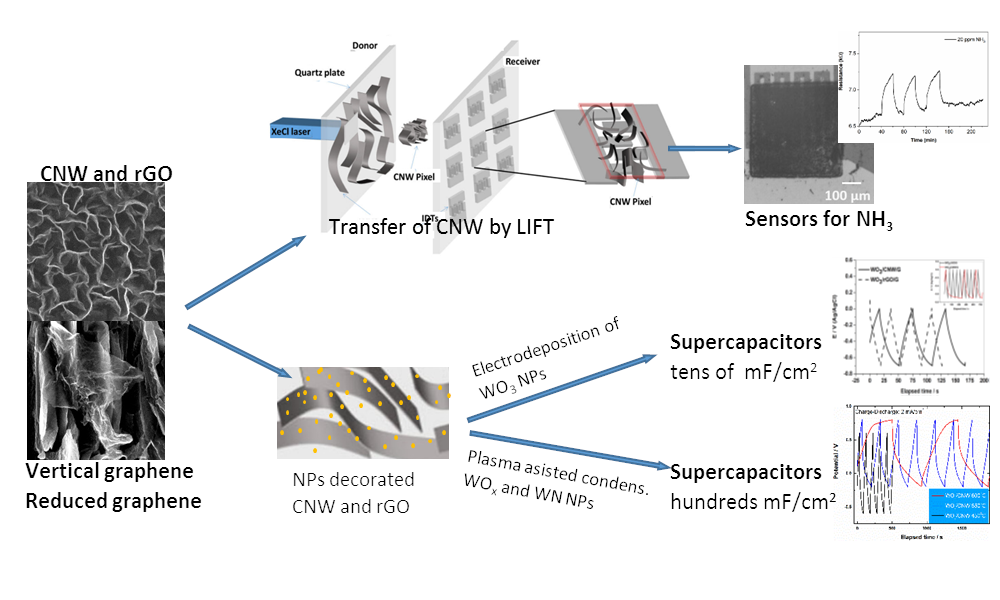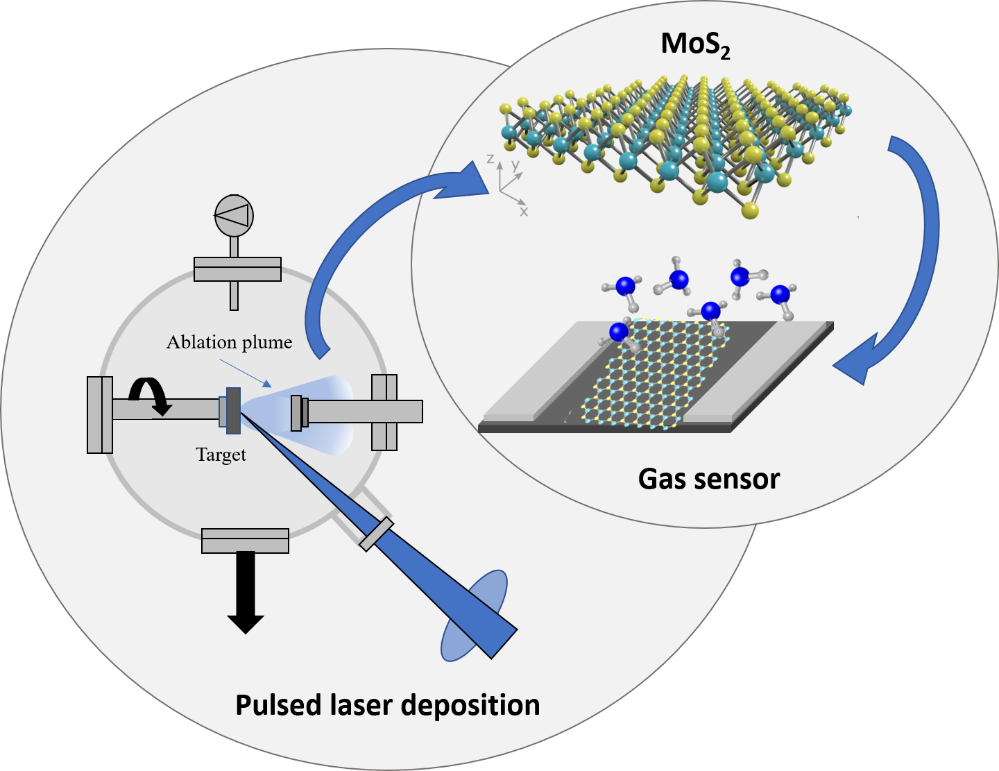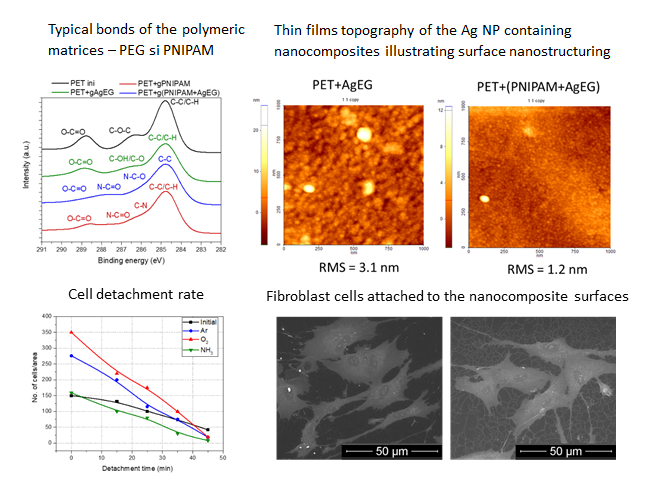
Shema de realizare a proiectului 19 15 01 01 - Anul 2022 - Etapa II
Phase no. 110
Responsible: Dr. S. Amarande
Deadline: 14.09.2022
Title: "Determinarea distorsiunilor spaţio-temporale ale fasciculelor cu bandă largă a frecvenţei. Măsurare şi reprezentare"
Abstract: We implemeted a method and an experimental setup for the measurement of the amplitude spatio-spectral coupling/distortion using an imaging spectrometer. We used these for the diagnosis of the laser beam in the first chirped pulse amplifier of a ultra-high peak power laser chain of 1 PW. For the quantitative characterization of spatial chirp, we utilized a normalized parameter defined with the mixed first order moment of the spatio-spectral intensity.
Graphic abstract:
a)
b)
Phase no. 111
Responsible: Dr. M. Demeter
Deadline: 14.09.2022
Title: "Determinarea distorsiunilor spaţio-temporale ale fasciculelor cu bandă largă a frecvenţei. Măsurare şi reprezentare"
Abstract: This project reports the obtaining and characterization of microemulsion-based hydrogels, made from complex polymer mixtures consisting of carboxymethylcellulose, poly(vinylpyrrolidone), poly(ethylene oxide) added with lavender oil, by irradiation with e-beam.
To optimize the emulsions, three mixtures consisting of surfactant (Tween 80) and co-surfactant (isopropyl alcohol) with different ratios were prepared to form the microemulsion basis (Smix 3, Smix 4, and Smix 5). Lavender oil was dispersed into the Smix mixture in various mass ratios. The microemulsion hydrogels were characterized from a physico-chemical point of view by gel fraction, swelling capacity, stability and biodegradation (physiological pH), optical transparency, viscosimetric and spectrocolorimetric analysis, and from a structural point of view, by FTIR analysis.
The microemulsion-based hydrogels made according to recipes 4 and 5, are not adhesive, retain their shape when handled, have an elastic character, and presented a gel fraction over 55%. The hydrogels showed different swelling degrees, between 7700 - 18000 %, which proves that they are superabsorbent materials. The emulsions showed prolonged stability in different pH conditions, without dissolving and maintaining their structure, which proves that through the chosen composition and irradiation conditions, the emulsions are stable due to the formation of covalent bonds between the functional groups specific to the compounds used. Hydrogels with a high swelling degree and moderate biodegradation were selected for the following studies since these compositions indicate that they contain a polymeric matrix with increased structural stability. The emulsions made according to recipe 4 showed a viscosity close to that of the initial polymer mixture, being in the same value range, and the emulsions from set 5 showed a homogeneous viscosity variation. Increasing the proportion of surfactant in the composition of the emulsions increased the absorption power of the hydrogels, but for some compositions, it led to phase separation of the emulsion.
The microemulsions made according to the recipes in sets 4 and 5 presented a high optical transparency, having values over 97%, also the spectrocolorimetric analysis showed that the microemulsions maintained their brightness, concerning the initial polymer mixture (L*∼99%). Most of the samples showed only changes easily perceptible to the human eye with values of ΔEab = 2 – 3. Emulsions prepared with a higher concentration of lavender oil showed a visible global color change with a value of ΔEab ≈ 4.8. Microemulsion-type hydrogels are elastic and have a permanent network and increased liquid absorption capacity, specific to cross-linked hydrogels.
Graphic abstract:
Phase no. 112
Responsible: Dr. A. Bratu
Deadline: 9.12.2022
Title: "Detectia urmelor de agenți chimici explozivi"
Abstract: Identification of hazardous chemical substances is an important means of preventing explosion accidents and early warning of secondary hazards. The need to detect and identify hazardous materials has led to the development of many laser-based explosive chemical trace detection systems. The most important performance characteristics of trace explosive chemical agent detection systems include high sensitivity, selectivity, reversibility, and real-time operation. CO2 laser photoacoustic spectroscopy and THz time domain spectroscopy demonstrate the vibrational and rotational character of molecules. Due to these properties, the molecular structure of substances can be determined from the absorbed or transmitted radiation. Having such a spectrum (absorption and/or emission) we can identify complex substances. The more we have a database with spectra in the IR and THz range, the more complex substances will be able to be identified.
CO2 laser photoacoustic spectroscopy has been used to detect explosive chemical agents such as benzene, toluene, acetone and ethylene glycol. The photoacoustic signals of the samples were recorded in the range 9.2 -10.8 µm. A maximum value of the benzene signal was observed on the 9P(30) line of the CO2 laser. Toluene presented several absorption peaks, in the 9 µm region with 4 maximum signal values on lines 9P(24), 9P(28), 9R(22), 9R(20). Acetone shows maximum values in the 10P branch, especially on lines 10P(28) and 10P(20). Ethylene glycol shows the maximum value of the signal on line 10R(8), but also on lines 10R(6) and 10R(14).
Using time-domain spectroscopy with THz radiation, transmission spectra in the 0.1-3THz range were obtained for compounds such as ammonium nitrate, potassium chlorate, dinitrobenzene, hexamethylene teramine, and it was observed that they have characteristic THz fingerprint spectra.
The two techniques highlighted different characteristic spectral patterns for each substance and we can observe different spectral behaviors. The use of these two techniques to identify as many dangerous substances as possible, represented a novelty in the field of security, on a national and international level, being able to identify in real time, dangerous substances for the security of people, defense, anti-terrorism and smuggling by recognizing the spectral signature of the hazardous material.
Graphic abstract:
Phase no. 113
Responsible: Dr. S. Vizireanu
Deadline: 9.12.2022
Title: "Determinarea distorsiunilor spaţio-temporale ale fasciculelor cu bandă largă a frecvenţei. Măsurare şi reprezentare"
Abstract: The unique physical-chemical characteristics of graphene-based nanostructures make these materials usefully in various applications. Recent studies shown that the modification of these nanostructures by decoration with nanoparticles and/or the modification of their surface characteristics by plasma and laser methods lead to new nanomaterials, namely nanohybrids. The properties of these hybrid materials greatly improve performance in various applications such as catalysis, sensors, energy storage, etc., more efficient compared to the original (untreated) materials. The current trend in the field of synthesizing nanohybrids is the combination/decoration of carbon nanostructures (nanotubes, graphene and more recently vertical graphene) with nanoparticles containing different metal oxides: RuOx, MnOx, WOx, NiOx, CoOx, FeOx, etc. On the other hand, during the handling, transfer and integration process of these nanostructure into various submicronic circuits, in flexible and temperature-sensitive supports technical issue can appear, that could be solve by using laser induced forward transfer (LIFT).
In this study, we performed several sets of experiments for synthesis and plasma modification of materials based on graphenes (Carbon NanoWalls-CNW also known as vertical graphenes), deposition of multilayer graphenes obtained by drying some graphene suspensions, but also synesis and decoration of CNW with tungsten oxide nanoparticles. After the morphological and compositional characterization of these nanohybrids, we tested two types of applications: gas detection and energy storage.
Regarding the detection of gases, we transfer CNW layers to flexible electrodes using the LIFT method. The sensitive material obtained by laser transfer are useful in ammonia detection at room temperature, in small concentrations up to 20 ppm.
In the case of energy storage, we also used various type of vertically oriented graphenes and multilayer graphenes, simple CNW, plasma modified CNW, but also decorated CNW with tungsten nanoparticles. The decoration with tungsten particles was done in a first step by electro-deposition, but also using condensation of tungsten oxide at 800 C assisted by plasma. The materials investigation shows that both morphology (smaller and well-dispersed particles) and surface chemistry (the presence of tungsten oxide but also tungsten nitride in the case of condensation) are different according to deposition methods. Electrochemical measurements shown that it is possible to prepare electrodes for high-performance supercapacitors from nanostructures listed above. The specific capacitances of the samples decorated with tungsten oxide nanoparticles obtained by plasma-assisted condensation are much higher (hundreds of mF/cm2), than in the case of electrochemical decoration with tungsten nanoparticles (tens of mF/cm2).
Graphic abstract:
Testing applications of plasma treated graphene-based materials.
1) Palla-Papavlu A., Vizireanu S., Filipescu M., Lippert T., High-Sensitivity Ammonia Sensors with Carbon Nanowall Active Material via Laser-Induced Transfer, Nanomaterials 12 (16) 2830 (2022).
2) Marcu, M; Preda, L; Vizireanu, S; Bita, B; Mihai, MA; Spataru, T; Acsente, T; Dinescu, G; Spataru, N; "Enhancement of the capacitive features of WO3 supported on pristine and functionalized graphite by appropriate adjustment of the electrodeposition regime"; Materials Science & Engineering B: Solid-State Materials for Advanced Technology 277, 115585 (2022).
Phase no. 114
Responsible: Dr. A. Palla Papavlu
Deadline: 9.12.2022
Title: "Dezvoltarea de matrici de senzori chemorezistivi cu materiale active pe baza de straturi nanometrice de metale de tranzitie dicalcogenide"
Abstract: Two-dimensional (2D) atomically thin films such as molybdenum disulfide (MoS2) show great potential to be used in 2D gas sensors. However, challenges due to the synthesis methods and techniques have made this task difficult. In addition, the mechanisms for sensing gas molecules are not fully understood. In this phase of the project, we report obtaining nanometric layers of dichalcogenide transition metals (MoS2), their morphological, structural, electrical and compositional characterization, as well as their application in chemoresistive sensor arrays.
Nanometric layers of dichalcogenide transition metals (MoS2) are obtained by the pulsed laser deposition (PLD) technique. Through successive optimizations, i.e., the optimization of the target-substrate distance, the optimization of the substrate temperature during the deposition, as well as the optimization of the laser fluence, we manage to obtain nanometric layers of dichalcogenide transition metals (MoS2), which are later used in the manufacture of sensors. The chosen approach is simple and flexible due to the fact that MoS2 can be easily deposited by PLD on a variety of substrates (SiO2, sapphire, interdigital electrodes) without the need for prior surface functionalization.
PLD-deposited nanoscale transition metal dichalcogenide (MoS2) layers are characterized and their optical, structural and morphological properties are obtained. Sensors based on nanometric layers of dichalcogenide transition metals (MoS2) are also fabricated, with a stable response when exposed to more than 10 cycles of ammonia. The sensors fabricated via PLD have a high response to ammonia (Ra/Rg ~2.2) and fast response/recovery times.
The first results obtained have been sent for publication (to Materials journal), we are also preparing an article with the title "Layered metal dichalcogenides thin films deposited by pulsed laser deposition for sensor development" (provisional), authors: A. Bercea, M. Pandele, S. Brajnicov, A. Palla-Papavlu. The results were disseminated to the scientific community at the international conferences EMRS Spring Meeting, International Conference on Laser, Plasma, and Radiation – Science and Technology Bucharest, Nanotechnology 2022, Thessaloniki, Greece.
The objectives assumed were met, and the investigations we commenced will continue with the evaluation of the sensitivity and selectivity of sensors based on two-dimensional atomic layers of MoS2 towards other volatile organic compounds.
Graphic abstract:
Phase no. 115
Responsible: Dr. B. Sava
Deadline: 9.12.2022
Title: "Realizarea de materiale vitroase cu proprietati opto-magnetice si semiconductoare, in sisteme complexe, dopate cu TeO2 sau V2O5, cu rezistenta chimica mare, depuneri prin PLD, metoda sol-gel sau MS, pentru aplicatii in eco-nanotehnologii"
Abstract: The purpose of these researches was to design, realize and investigate the obtaining of thin layers by sol-gel method, spin-coating deposition, from the ternary system V2O5 - B2O3 - P2O5 for use in photonics, optoelectronics and for magneto-optical applications. Stable soils and sol-gel spin-coating deposits were made for three compositions selected, on microscope slide substrates of silico-calco-sodium complex glass. Three layers were deposited, each layer for 60 s and dried at 90 oC for 60 s. Subsequent thermal treatments were performed at 150 and 200 oC. The system with 50 molar % vanadium oxide was selected as the most stable. From the SEM images, the following were observed: i) The quality of the deposits is good, but some inclusions appear; ii) The dry deposition at 90 oC has homogeneous granular structure, with grains of few microns and rare voids; iii) The deposit thermally treated at 150 oC shows more pronounced granules, with dimensions of 5-10 microns; iv) The deposition thermally treated at 200 oC shows a continuous deposition, almost completely vitrified, with rare defects, such as gaseous inclusions. From the XRD analysis, profiles without crystalline maxima can be observed, so it can be concluded that all the samples are amorphous. The thermal treatment leads to the vitrification of the film, without observing crystallization in the vitreous mass. The XPS analysis of the samples led to next observations: i) phosphorus and vanadium were identified in all the samples, and boron only in the dry sample; ii) carbon and nitrogen were identified as technological impurities; iii) the percentages of oxygen and phosphorus increase with the increase of the heat treatment temperature; iv) the percentage of vanadium is fluctuating, initially it increases from dry sample to sample burned at 150 oC, then decreases to sample burned at 200 oC; v) the peaks specific to vanadium move strongly from the dry sample to the heat-treated sample at 150 oC, towards higher energies, then stabilize, but still increase slightly in the heat-treated sample at 200 oC, which is due to the integration of vanadium into the glassy boro-phosphate network. A number of 3 articles were published in well-rated ISI journals (2 in the red zone Q1, one in the yellow zone Q2) and 3 presentations were made at international conferences. It is proposed to continue the research up to the stage of TRL4 with potential valorization through technological transfer, at the level of TRL5-TRL6.
Graphic abstract:
Phase no. 116
Responsible: Dr. B. Mitu
Deadline: 9.12.2022
Title: "Evaluarea interactiei cu materia vie a materialelor nanocompozite pe baza de matrici polimerice sintetizate prin tehnici combinate cu plasma"
Abstract: In the research carried out in the present stage of the project, thin films of nanocomposite materials based on polyethylene glycol (PEG) and polyisopropylacrylamide (PNIPAM) polymer matrices, and silver nanoparticles respectively, were synthesized using plasma techniques. As well, the physicochemical and biological properties were investigated in order to elucidate the undergoing interaction with living matter. Compositional studies illustrated the presence of typical bonds depending on the composition used in the synthesis, and the generation of characteristic carboxylic and amino/amide bonds when treating surfaces with plasmas generated in reactive gases. The results demonstrated the effectiveness of surface treatments for polymeric materials based on PNIPAM, which presents a temperature response associated with the extended state and respectively the collapsed state depending on the working temperature (below or above LCT). In addition, the surfaces have different degrees of nanostructuring depending on the materials used as precursors and respectively on the plasma approach used, namely surface treatment or plasma polimerization on surface following the grafting procedures. All the obtained materials presented a high degree of biocompatibility, illustrated both by the quantitative tests and by the cell adhesion studies, which proved the uniform coverage of the surfaces, with cells spread over the entire surface and typical characteristics of spreading and multiplying. Cell adhesion and detachment studies have illustrated the capabilities induced by the combination of critical point polymeric materials and plasma treatments for increasing the efficiency of desirable cell manipulation processes, which open important perspectives in the area of surface bioengineering assisted by plasma processing.
The obtained results have been published in ISI journals belonging to the 1st quadrIle (Q1) and disseminated to several international conferences as posters, oral presentations and invited lectures.
Graphic abstract:

